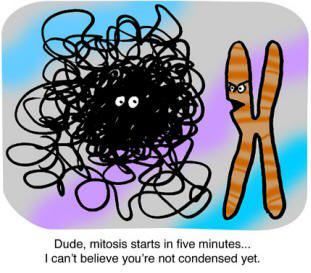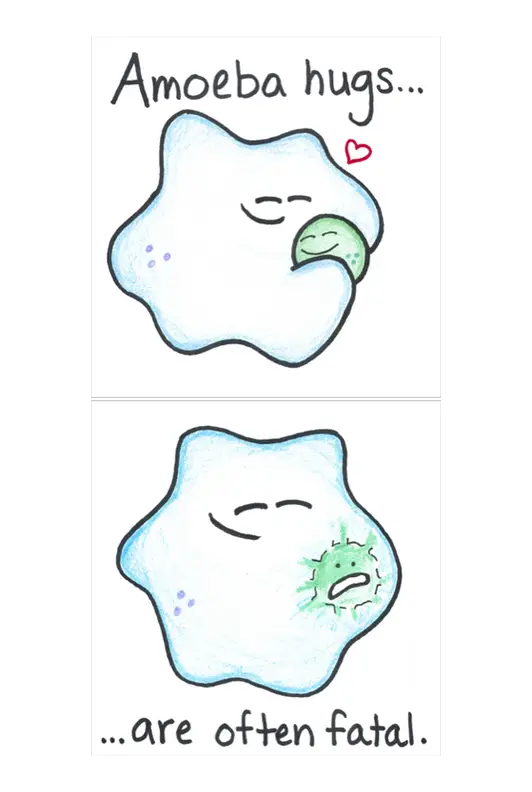A picture is worth a thousand words. I want to share with you 6 science humor images that make me smile. – and also the points that make me smile.
Let’s dive in!
This article covers
Cell division humor
Background
DNA molecules are very long threads and disorganized in the nucleus, called chromatin. The DNAs need to condense and form chromosomes before cell division. This condensation ensures the proper separation of the DNA.
For more knowledge about cell division, please check out our posts:
1. Why Cell Division is Important
2. Pack DNA into chromosomes
3. What is mitosis
4. The phase of mitosis
Funny points
The thread of DNA is still in a mess, so the chromosome that is ready for mitosis is laughing at the thread of DNA.
Cell biology humor
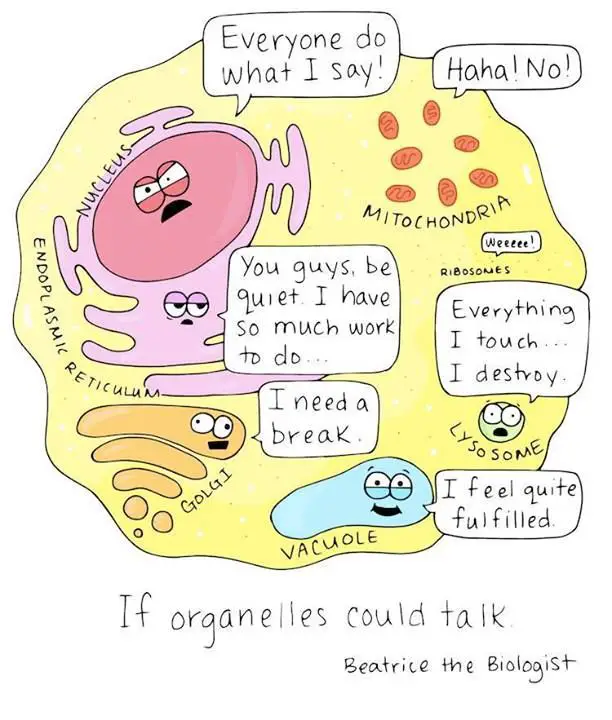
Background
The nucleus is the brain of the cell. It stores most of our genetic information (in the form of DNA) and coordinates the function of each organelle.
In contrast, mitochondria, also have their own DNA but only encode 13 genes for making the components of the electron transport chain.
The endoplasmic reticulum (ER) is a very important organelle. It performs protein and lipid synthesis, protein folding, and modification.
The Golgi apparatus (or Golgi) usually locates close to the ER. If you think of ER with ribosomes as the protein factory in the cells, then the Golgi takes over the logistic work. The Golgi apparatus receives the raw protein products from the ER, modifies them (for example, adding tags made by sugar chains), and exports the proteins to a variety of destinations.
The lysosomes are small organelles that work as cell recycling centers. They contain enzymes that break down whatever substance enters the lysosomes into raw materials.
For more information about what each organelle does in the animal cells, please check out our posts:
1. Cell Biology on the Dining Table – Animal Cell Model Part I
2. Cell Biology on the Dining Table – Animal Cell Model Part II
3. The Function of the Autophagosome and Endosome
Funny points
The nucleus is like a boss, a control freak. Every organelle has to do what it says.
The mitochondria have their own small DNA, so they can say “No” to the nucleus!
ER functions as a manufacturing and packaging system and usually works very hard. No wonder it says, “I have so much work to do. Be quiet, you guys.”
Because Golgi is very busy modifying, packaging, and transporting proteins, I can imagine it needs a break.
Lysosomes contain enzymes that break down whatever substance enters the lysosomes; therefore, it says, “Everything I touch, I destroy.” Isn’t it funny?
Finally, the function of the vacuole is for storage, so it says, “I feel quite fulfilled.”
Last but not least, below is my illustration of a cellfie. If you are interested in this design, you can purchase the sticker here.
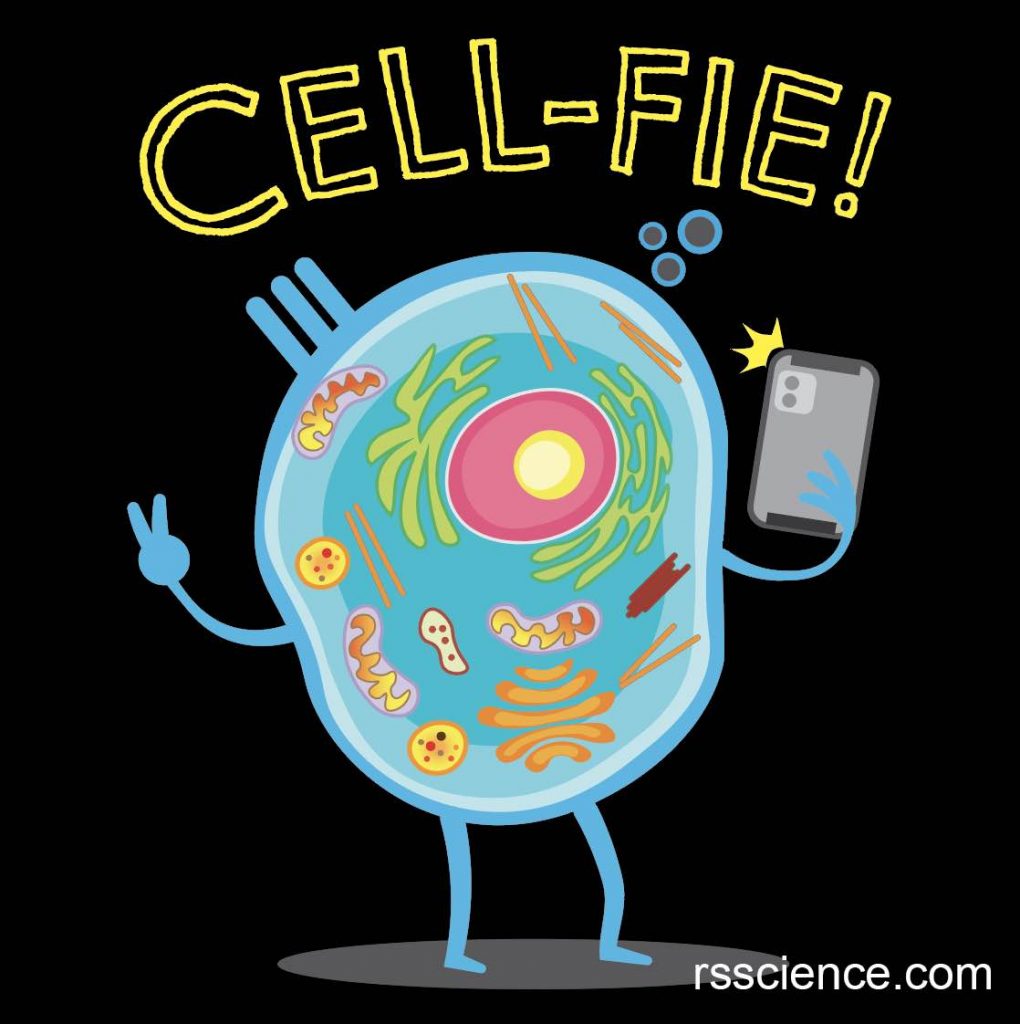
Amoeba humor
Background
The amoeba eats its prey by a process called “phagocytosis. As the amoeba moves towards its prey, its pseudopods (part of the membrane directed by the cytosol movement) reach out, surround, and engulf the food inside the amoeba by forming a food vacuole. Then the digestive enzymes are released into the vacuole to break down the food into small nutrient molecules.
For more information about Amoeba, please check out our posts:
Facts about Amoeba
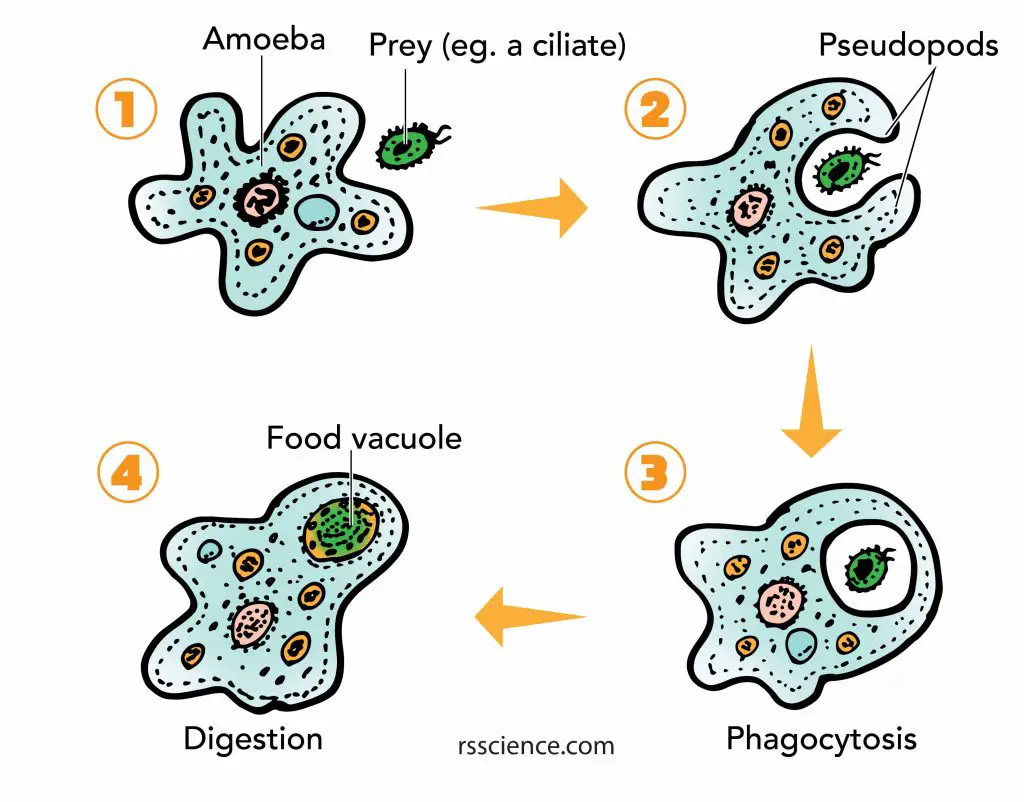
[In this figure] The illustration of phagocytosis.
The pseudopods first surround and bring the food particle close to the amoeba. Then a part of the cell membrane opens to allow the particle to move into the cell and into a food vacuole, where it is digested by enzymes.
Funny points
The way amoeba finds its food is like a “hug.” No wonder amoeba hugs are often fatal.
Bacteria and virus humor
Background
Our impression of bacteria and viruses is that they are disease-causing organisms. We are often confused by the treatment of viruses with antibiotics. Bacteria are living organisms, so we can use antibiotics to treat bacteria-causing diseases. In contrast, viruses are often smaller than bacteria. Strictly speaking, they are not even living things. They can only live and reproduce inside the cells. Without their host, viruses are not “living things.”
For more information about bacteria and viruses, please check out our posts:
1. Are viruses alive?
2. Can a light microscope see bacteria?
3. Can a light microscope see viruses?
4. The size of the virus
Funny points
I like the facial expression of this bacterium. 🙂
The bacterium points out the difference between the virus and itself. The bacterium realizes that he/she is talking to a non-living thing. And the virus responds, “sigh.” lol
Tardigrade (water bear) humor
Background
Water bears (official name: Tardigrades) are the toughest animal on the Earth. Water bears can survive in hot springs, in the deep ocean (high pressure), under solid layers of ice, and even after exposure to deadly irradiation.
For more information about tardigrades, please check out our posts:
1. How to Find Tardigrades (Water Bears)
2. A video of Tardigrades
3. Facts about Tardigrades (Water Bears)
Funny points
This image is a picture of a tardigrade. One of its characteristics is to survive in extreme conditions, such as high pressure. No wonder it says, “I work well under pressure.”
Plant humor
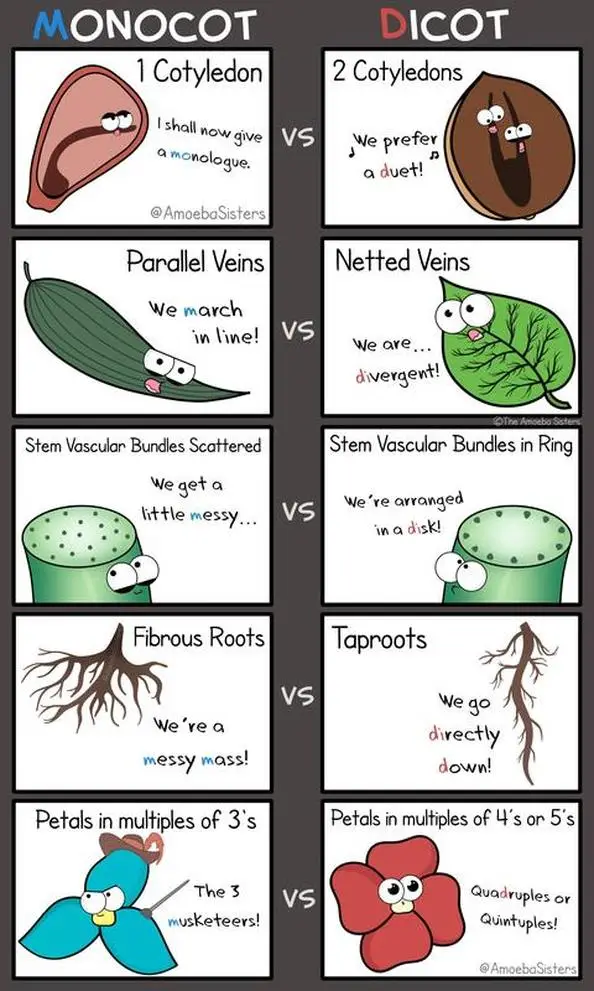
Background
Monocot plants differ from dicot plants in five distinct structural features: seeds, leaves, stems, roots, and flowers.
Seeds
The monocot has a single cotyledon and an embryonic leaf, while the dicot has two cotyledons and two embryonic leaves.
Leaves
The monocot veins in the leaves are parallel, while the dicot veins are net-like and reticulate.
Stems
Monocot stems have vascular bundles scattered throughout the plant interior. In contrast, the vascular bundles in the dicot stem are arranged in a ring, with a pith concentrated at the core of the stem.
Roots
The monocot roots can not increase their diameter as they grow; instead, they grow more roots. The dicot roots have a long and deep primary root, with a smaller secondary root growing laterally off the primary root (tap root system).
Flowers
The monocot flower parts are numbered in the threes or multiples of three, while the dicot flower parts are numbered in the fours or fives.
For more information about monocot vs. dicot plants, please check out our posts:
1. Monocot vs Dicot plants
2. Plant tissue under a microscope – xylem and phloem
Funny points
This is a great way to remember the monocots and dicots.


